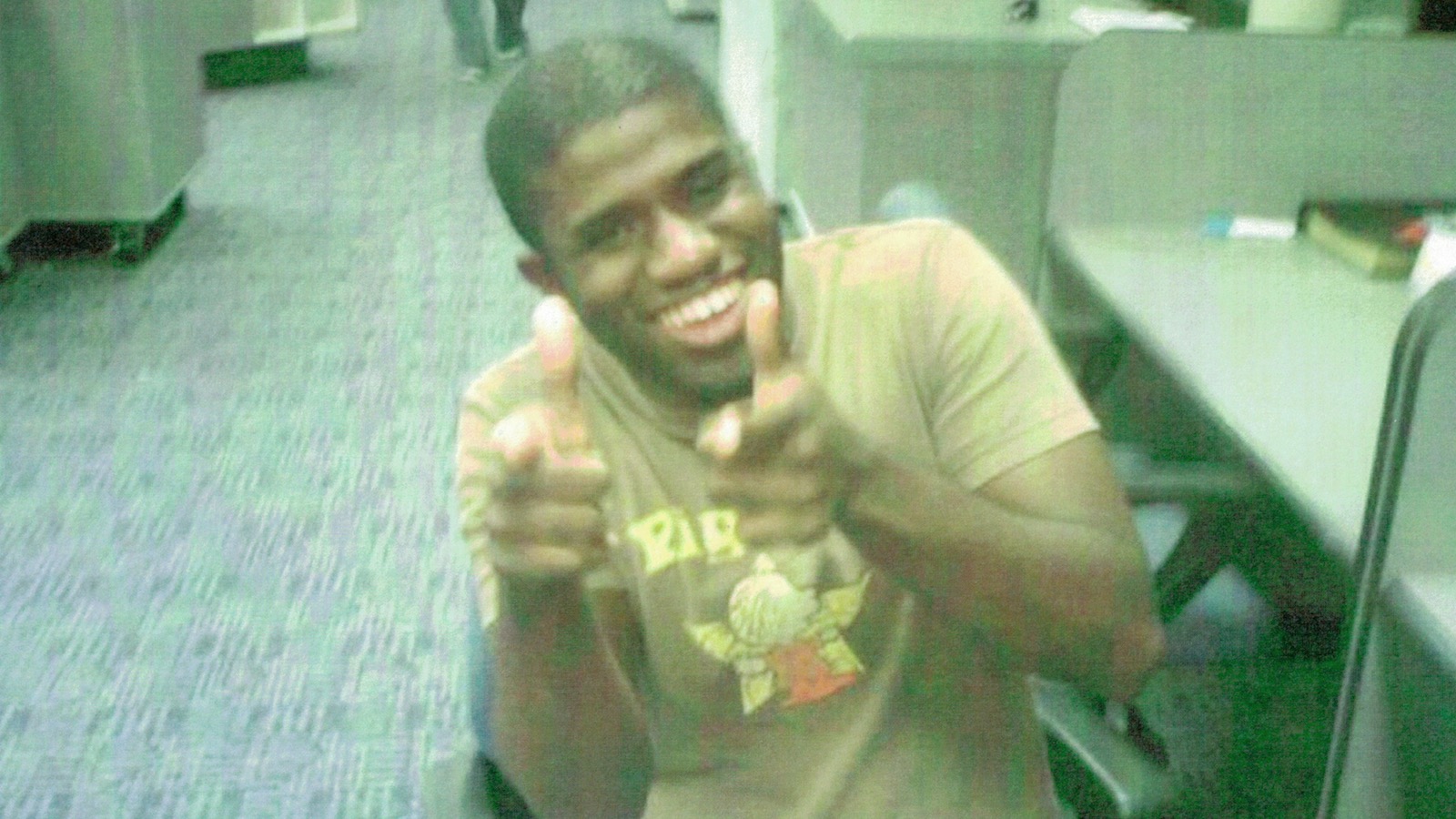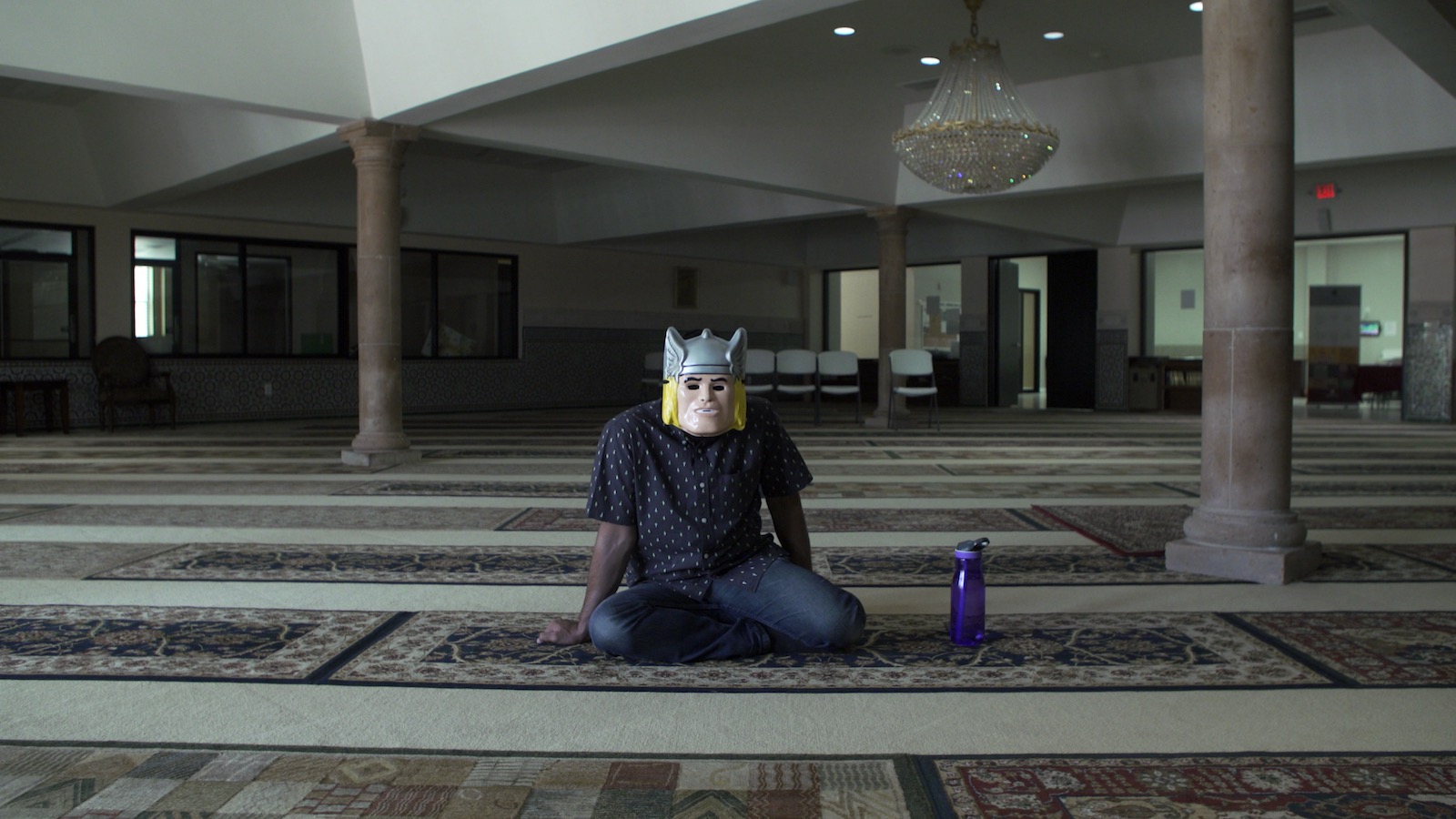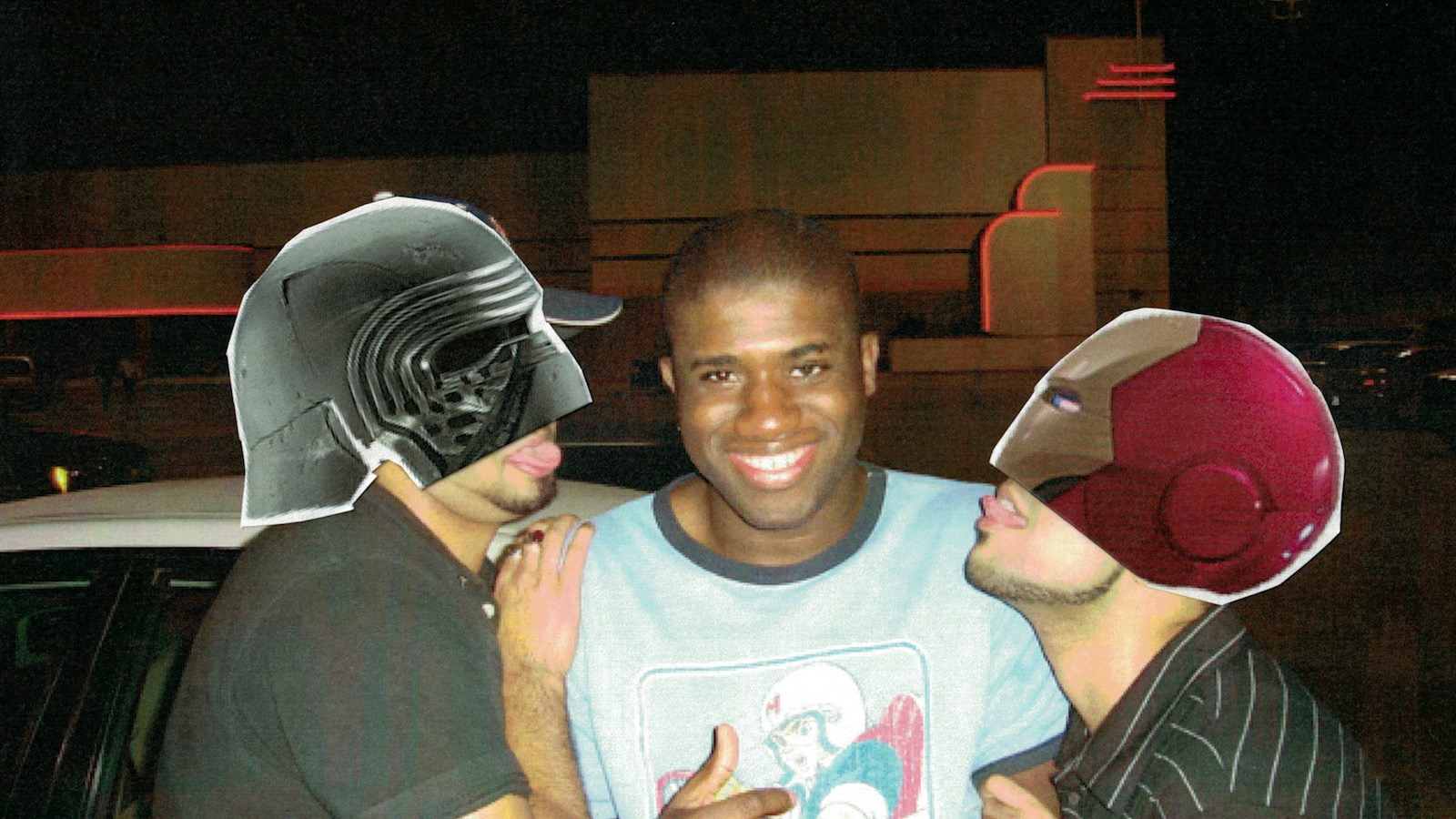On its face, Ghosts of Sugar Land, the recent documentary short from Pakistani-American filmmaker Bassam Tariq, is a tender record of young Muslim men coming of age in the American suburbs under the shadow of Islamophobia and the War on Terror. The film tells the story of “Mark,” the agreed-upon pseudonym for a young black man from the Houston suburbs who converted to Islam as a teenager and was radicalized online as an adult, leading him to leave the US to join the Islamic State in Syria. Tariq tells Mark’s story through anonymous interviews with his high school friends, a group of South Asian Muslim men who mourn his disappearance and contend with his betrayal of their friendship. In these interviews—filmed in the homes, convenience stores, and backlots of Sugar Land, Texas—Tariq documents a personal suburban history of Muslim America today.
Now an affluent suburb of Houston, Sugar Land was founded in the early nineteenth century as a sugar plantation prized for its location near the Brazos River. The mid-twentieth century brought rapid suburban expansion to the city and, as a result of the post-1965 repeal of immigration restrictions, a large immigrant South Asian population found its way to Sugar Land at the turn of the twenty-first century. Mark’s friends were born into this community, and their coming-of-age was shaped by the negotiation between American assimilation and cultural obligation. As one of Mark’s friends explains, “The suburban desi, the Sugar Land desi, he’s trying to be as American as possible.”
Mark faced his own fraught explorations of identity. He was an outsider in high school, being one of the only black students in his class, but as his friends tell it, they always tried to make him feel welcome in their culture. Converting to Islam seemed like an inevitable act of friendship. He tried it once, on a lark, and then a few times more until it finally stuck, gaining saliency after college while he worked in rural, white Texas. The racism and Islamophobia he encountered there cemented his own growing belief that Islam was a religion under attack. “The individuals that he dealt with didn’t like Muslims at all,” recounts one friend. “I think that’s when it started changing a little bit.”
Over time, Mark committed himself to Islam much more strongly than his friends did, driving them apart. He posted increasingly conservative views online. The actor Kc Okoro reads Mark’s social media posts in the film, giving voice to a public, online self which is in turns boyish and didactic. “Why is it that I see so many people born into Islam forming opinions and patterns of behavior outside of Islam?” Mark asks in one missive. “Is it out of misinformation? Or do people simply not care about right between wrong?” These posts escalated, and sometimes turned into critiques of American imperialism and the American Muslims who neglected their duties to the Muslim community globally, until one day, Mark’s friends woke up to a Facebook post from him with the location tagged in Turkey. A few days later, there was a new post from their old friend. “I along with several other people ran across the Turkish border,” he wrote. “I am now currently living in the Islamic State [in Syria].” They haven’t seen Mark since.
Ghosts of Sugar Land is a personal project for Tariq, who grew up in Sugar Land in the same Muslim American community. Shot by Jake Saner, the film captures the boundless, flat landscape of suburban Texas: oil refineries spouting smoke and fire, white houses lining tree-canopied streets, complex networks of telephone wires cutting neatly across the big Texas sky. All of the men, now in their early thirties, are interviewed in the documentary in costume masks to preserve their anonymity. One is Kylo Ren, another is Buzz Lightyear; there are various Marvel superheroes. We meet Iron Man sitting in the aisles of a fluorescent-lit convenience store. Mario and Optimus Prime pick apart Mark’s story in an empty nighttime parking lot. Thor sits on the dark green janamaz (prayer mat) at a large masjid, framed by marble pillars.
The masks were chosen randomly—according to Tariq, they picked up whatever was available at Party City—but the American pop iconography reminds us of how the film’s subjects wrestle with assimilation. Watching Muslim American men discuss radicalization in Iron Man and Thor masks also brings to mind the way the War on Terror is most present in many Americans’ lives: the Hollywood superhero movie. These are films that narrativize American imperialism as a matter of good (the US) vs. evil (as decided by the US). They often enforce America’s status as a heroic wardog and play out post-9/11 anxieties, both implicitly (shots of the destruction of major American cities) and explicitly (the war in Afghanistan as the backdrop to the Iron Man movies).
Advertisement
Mark is the only unmasked person in the film. We see him as a teenager in old photographs as his friends knew him: goofing off, playing ping-pong, grinning on a trip to the water park. In these photos, Tariq has covered the faces of his friends with cutouts of their corresponding masks or blurred them, giving the images a ghostly edit.
As a black Muslim in America, Mark is doubly targeted, in the words of Su’ad Abdul Khabeer, to a “burden of state violence… the war on crime and the War on Terror.” Mark’s race and that he was a convert set him apart from his friends (“He was always that black Muslim,” says Kylo Ren of Mark), but the history of Islam in America is black history—the first Muslims in this country were enslaved Africans—although that lineage is often erased by non-black Muslims. In one scene, Optimus Prime begins to argue that “A Muslim is the bottom of the barrel in this country, the blacks have it better…” before the rest of the group quickly corrects him. Later, Mario speaks frankly about how they used to treat Mark because he is black: “He was the butt of the jokes.” Throughout the film, Mark’s friends contend with how their friend became a stranger, but these conversations offer an honest look at how they, too, contributed to that estrangement.
The conversations among Mark’s friends are what make Ghosts of Sugar Land a powerful document of the usually secret, internal negotiations that Muslim Americans have with one another in a country that aggressively surveils them. The stories of the FBI agent parked outside your family’s house because your brother was at a madrassa, the fear that drove your mother to throw away all your Muslim Student Association shirts. (One of the central debates of the film is whether Mark was really radicalized online or recruited by the FBI as a plant; in the closing credits, we learn that Mark, whose real name is Warren Christopher Clark, was captured in Syria shortly after filming ended and indicted for attempting to provide material support to a terrorist group.) “If Mark saw this he’d be like, ‘Look at these Muslims, they’re covering their faces and they’ve done nothing wrong,’” one of the interviewers says from off-camera in one scene. Kylo Ren, Optimus Prime, Mario, and Spider-Man are seated together in one of their homes. Embroideries of surahs from the Qur’an hang on the wall. There is a long pause before Optimus Prime answers, matter-of-factly, “I mean, yeah, that’s the state of the Muslim in this country. It’s to be scared.”
When I told an acquaintance, who is also Pakistani American, about Ghosts of Sugar Land, he was exasperated: “Of course it’s about radicalization.” I understood his fatigue immediately. When I hear that word, I cannot help but associate it with the language of TV pundits and war hawks. As Arun Kundnani argued in his 2014 book The Muslims Are Coming!, in many ways, “radicalization” is a manufactured idea that the US exploits in order to expand surveillance networks and military power. It emphasizes the role of Islam—and its interpretations—in the War on Terror, and deemphasizes the US as a political and military actor. As Kundnani puts it: “The spectacle of the Muslim extremist renders invisible the violence of the US Empire.”
For many Muslim Americans, there’s a wariness of playing to type and of playing into the surveillance state. The film is conscious of that tension. “It’s so cliché it’s almost unbelievable,” Kylo Ren says of Mark’s story. Defensiveness, anger, resentment, cynicism, fear: they’re all laid bare in the film’s conversations. But in prioritizing Mark’s friend’s accounts over a political, racial, and historical analysis, Ghosts of Sugar Land lacks a complex understanding of the part that American imperialism and anti-blackness have in Mark’s political development and his journey to join ISIS. And in this current moment of a national uprising over police killings of black people, the relationship between American warfare abroad and the militarization of the police is an even more noteworthy part of Mark’s story.
It is Tariq’s intimate, poetic depictions of brown men that mark his work as a filmmaker. He has cited Andrei Tarkovsky as an artistic influence, and Tarkovsky’s dreamlike approach imbues Tariq’s debut documentary, These Birds Walk (2013), co-directed with Omar Mullick. Following runaway children housed in the Karachi orphanages run by the Pakistani humanitarian Abdul Sattar Edhi, the film is an impressionistic look at lost boys as they come of age together, away from their families. Mark’s isolation is distinct from that of his friends, but a similar boyhood loneliness runs through Ghosts of Sugar Land, whose subject is as much the emotional losses suffered by Muslim American men as it is their political alienation from the state. “Looking back,” says Buzz Lightyear of Mark, “all of his troubles were with him trying to find someone he belongs with.”
Advertisement
Ghosts of Sugar Land is a look at the jump from boyhood to adulthood—that inevitable journey of loss. In some of the film’s recreations of old photographs, we see Iron Man grandstanding in the masjid, first as a teenager and then as an adult; or Optimus Prime sticking his torso out of the sunroof of a car, flipping off the camera. Then we see a photograph of Mark as a teenager, laughing in the backseat of a car, followed by a shot of the same corner of the backseat—but this time it’s empty, the car driving along the tree-lined streets of Sugar Land without a passenger. This is the final image of Mark in the film—not a friend, or a liar, or a spy, or a terrorist, but a loss. “Has anyone here prepared for the possibility that he may not even be alive at this point?” asks Kylo Ren. “More and more, that question plagues me.” In that absence, all that is left are questions, hanging around like ghosts.
Ghosts of Sugar Land is streaming on Netflix.




